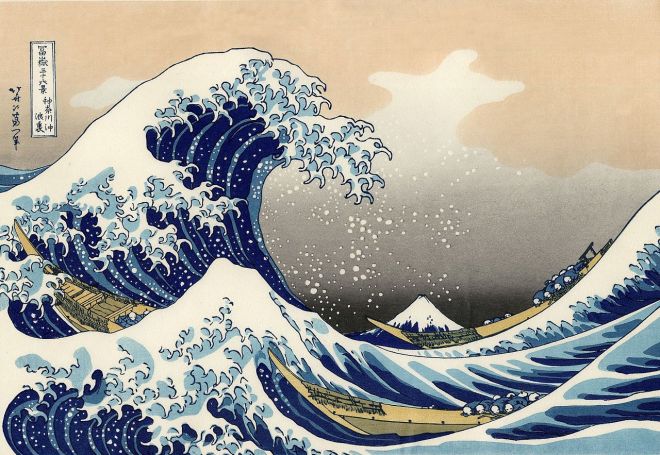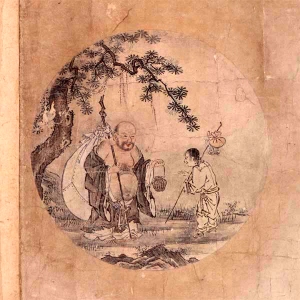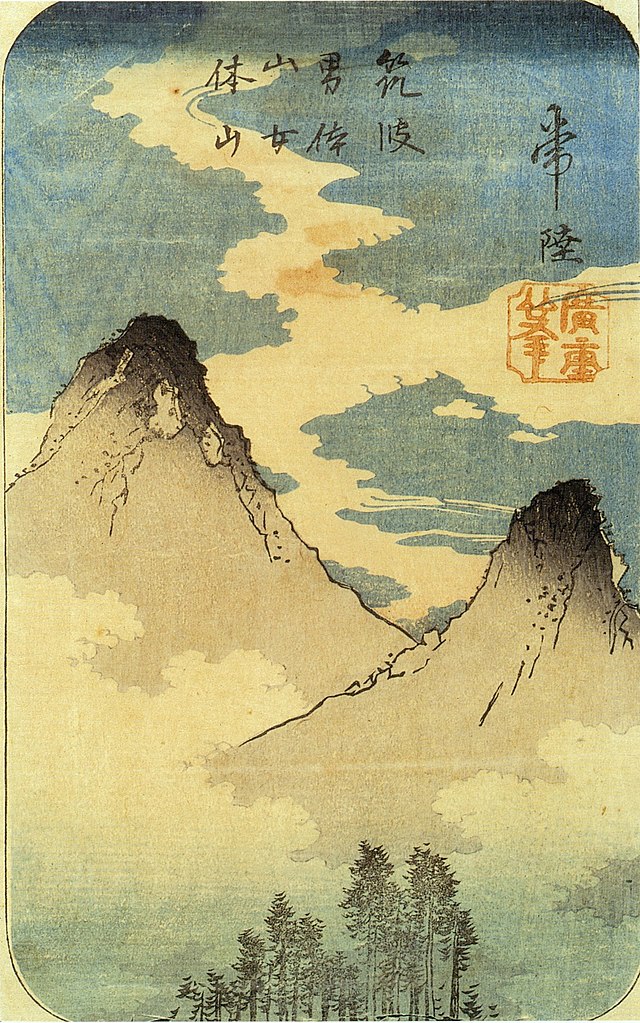
“This world of historical reality, wherein we are born, act and die, must be, when logically seen, something like the contradictory self-identity of the many and the one. I have come to this point after many years of pondering” (Nishida Kitaro Collected Works, quoted by Michiko Yusa in her PhD Dissertation).
Troubled times
Yusa notes that “the contours of Nishida’s dialectical philosophy began to emerge” in a lecture he gave in November 1934, where he stated that the actual world is the world “where we are born, work, and die,” and that this world is “the many as the self-negation of the One, and it is the One as the self-negation of the many” (Nishida Kitaro, “The logical structure of the actual world,” lecture delivered at Otani University in Nov. 1934 quoted by Michiko Yusa in Zen and Philosophy – An Intellectual Biography of Nishida Kitaro, 256).
Nationalism and militarism were then on the rise in Japan as they were in Germany and in most leading nations. Japan had launched in 1931 the series of attacks which led to the Second Sino-Japanese war in 1937. Japan had been at war for many years already, first with Russia, and then China during the First Sino-Japanese War. But the situation was becoming increasingly volatile. There was talk of a “Holy War” against China. The year 1933 had seen the burning of books by the Nazis in Berlin. Though Nishida, who had retired from the university in 1928, had entered a happier period of his life, following his remarriage and move to Kamakura, he was still active in the academic world, and observed with great concern the attempts by reactionary forces to impose a nationalist ideology on the country, and in particular on the young through the education system. But, as Yusa notes, “as he saw cultural suppression by brutal political forces, he strengthened his conviction that the contribution he could make as a thinker was in the area of pure philosophical inquiry. The more insane the world grew, the clearer his mission became” (Yusa, 256).
Yusa notes that it is on New Year’s day 1934 that Nishida wrote his famous waka, now inscribed on a monument on the “philosopher’s path” where Nishida used to take walks when he lived in Kyoto: “People are people, I am I, Unperturbed, I take the path I take ” (Yusa, 257).

Though Nishida describes himself as “unperturbed,” it is difficult not to see in the tragic events which unfolded at the time a strong invitation to take Zen out of the monastery, and turn it into a path for people involved in the “real world” – what he calls “the world of historical reality.” The Buddha had enjoined his disciples to “go forth from home into homelessness” or later, into a monastery, which required cutting ties with society. Though in China, the last of the “Ten Oxherding Pictures” shows the enlightened “herder” returning to the city, Buddhism, even in the Far East, has focused on the training of disciples eager to attain enlightenment, and generally not done much to prepare its enlightened disciples to become involved in the outside world. One step, however, had been taken in that direction when East Asia, and especially Japan, had reinterpreted the concept of emptiness, and equated it with the world of change, thus regarding the phenomenal world as the real world where our lives unfold, and not as a world of illusion as it had been taken to be in India. It is clear that from the real world as “phenomenal” to the real world as “historical” is but a step, which Nishida took, as the dark clouds of war were gathering over his head.
Self-contradictory identity
Zettai mujunteki jikodoitsu is here translated as “self-contradictory identity,” but it has also been rendered as the “unity of opposites,” “contradictory self-identity,” “self-identity of contradiction,” “identity of contradiction,” and “contradictory identity” (Robert E Carter, The Nothingness Beyond God, 61). Zettai, means absolutely, mujunteki, contradictory, jiko, self, and doitsu, identity. The phrase has also been translated as “the self-identity of absolute contradictories.”
Carter explains: “The one is self-contradictorily composed of the many, and the many are self-contradictorily one. The world can be viewed in two directions – the double aperture – and its unity is not the unity of oneness, as the mystic would likely express it, but the unity of self-contradiction. It is both one and many; changing and unchanging; past and future in the present. Nishida’s dialectic has as its aim the preservation of the contradictory terms, yet as a unity … This is the logic of soku, or sokuhi – the absolute identification of the is, and the is not. In symbolic representation: A is A; A is not-A; therefore A is A. I see the mountains. I see that there are no mountains. Therefore I see the mountains again, but as transformed. And the transformation is that the mountains both are and are not mountains. That is their reality” (Carter, 58).
Carter is here referring to the well-known epigram by the Chinese Zen master Qingyuan Weixin (9th century):
“Thirty years ago, before I began the study of Zen, I said, ‘Mountains are mountains, waters are waters’.
After I got an insight into the truth of Zen through the instruction of a good master, I said, ‘Mountains are not mountains, waters are not waters’.
But now, having attained the abode of final rest [that is, Awakening], I say, ‘Mountains are really mountains, waters are really waters’.”
(Translated by Masao Abe, Zen and Western Thought, 4)

In the first line mountains and waters are taken to be solid entities, “objects” existing outside oneself with a being of their own. This is the view of ordinary objective consciousness, where A is A.
The second line reflects the Buddha’s doctrine of anatman, meaning “no own being,” whereby one understands that mountains and waters are only names which have been “pinned” onto reality, as signs, they are “historical” forms projected on reality by human culture. A student of Western philosophy can reach the same conclusion by reading Kant who holds that our perception of reality is necessarily shaped by the structures of our minds. So A is not A.
Having attained awakening, in the third line, one has accepted the fact of the unreality of mountains and waters as abstract concepts empty of own being, historically generated forms, and one has, as it were, taken these on board throughout one’s life. One has, therefore, fully realised the true nature of the things of the world as perceived: that is, the real is the phenomenal, the real is real in its unreality. A is really A.
In Carter’s words, “The mountains that one once saw in a straightforward and ordinary way were then lost in the identity of nothingness in which all differentiation gives way to the undifferentiated sameness, only to be recast (emptied) such that the mountains again seen are now seen differently because they are 1) freed from old habits of understanding, 2) seen in and for themselves, and 3) lined with the depths of nothingness … now one sees it ‘as-it-is-by-itself’, in its ‘thusness’. One’s ‘no-mindedness’ has allowed nature to ‘nature’” (Carter, 75). Natura naturans.
Even though, line 3 – A is really A – appears to come back to line 1 – A is A – the way the mountains are seen in line 3 is radically different, because it includes not only the understanding that mountains are arbitrary forms, but it overcomes the ordinary duality of the really real and the illusory appearance by asserting that the mountains are really real because they are, in a sense, illusory, empty of being, a name which has been, as it were, added by humans. The “A is A” of line 1 is the ontological standpoint of “object logic.” The “A is really A” in line 3 is the standpoint of absolute nothingness. Self-contradictory identity is the standpoint where one sees reality as “lined with the depths of nothingness,” real in its very unreality, or as Buddhism says, “in its thusness.”
“Everything is change, or impermanence, says the Buddhist, and yet it is precisely as change that persons and things are what they are” (Carter, 59). To be sure, this was the view Chinese culture referred to as Dao, where life emerged out of the empty Dao and flowed through the many phenomenal forms of the ten thousand things. For the Chinese, such a view may not have appeared paradoxical, because the notion that “the One is two” was intuitively grasped. It is yin and yang, not just as energetic metaphors, but as containing each other, since each thing is both yin and yang, in various proportions, with the ability to mutate into the other, in a sort of dance. The Daodejing is in many ways a “celebration of the fecundity of emptiness” (Roger T Ames and David L Hall, A Philosophical Translation Dao De Jing “Making This Life Significant,” 86).
“The real is, in itself (as we know it) contradictory … What made coming to this insight so arduous is the fact that Nishida had to reject both the perspective of ordinary logic, which seeks to eliminate paradox – i.e., which takes the law of non-contradiction as its emblem (either a thing is, or is not) – and the perspective of dialectic, which eliminates paradox and contradiction in a single whole or oneness. What Nishida struggled for was a different perspective which could embrace both the thesis and the antithesis, the subject and the object, without suppressing either. The real, phenomenal world is both one and many, subjective and objective, changing and unchanging. Reality is self-contradictory” (Carter, 62).
Aristotle’s principle of non-contradiction states that a thing cannot both “be” and “not be.” Hegel’s dialectic contends that knowledge emerges out of a thesis followed by an antithesis negating the thesis – that is, through contradictory statements – whose contradiction is, as it were, “overcome” by a synthesis which erases the contradiction, thereby abolishing the tension. Both Aristotle and Hegel approached reality from the standpoint of objective logic, the view from the ego-centred consciousness which posits the world as “out there” somewhere in front of us, reflecting itself in our consciousness. Nishida had to transcend these to describe reality as seen by the egoless “empty” consciousness, which he equated with the field of basho or absolute nothingness, as he went deeper into the process through which reality emerges through our consciousness – the very process of natura naturans. What “I” see as “I” is a field of consciousness where the formless self-determines as the world of forms. Most significantly, Nishida was careful not to merge the One and the Many, which would have abolished the tension by stating, as most religious philosophies do, that the Many are absorbed into the One, often the Creator God, or, in India, Brahman/Atman. The One and the Many remain in dialectical tension to the end, as two relatives which are at the same time two absolutes. It is in that sense that self-contradictory identity includes the seldom translated zettai (absolute) which does appear, however, in “the real is the self-identity of absolute contradictories.” “For Nishida, the real is no less one than it is many, no less different than it is identical” (Carter, 61).
“Nishida’s strength is that he did not try to resolve the contradictions of experience, but saw them as inescapable descriptions of the way the world is, as it is known by us. The result is not a synthesis, but a unity-in-contradiction, a unity of opposites” (Robert E Carter, The Kyoto School, 45). Thus Nishida moved from the western logic of either/or, to a logic of both/and. “We both live, and at the same time we are dying; or again, everything is what it is, and yet is lined with nothingness; a thing is distinctly what it is, and yet it is (a part of) the One” (Carter, 45). The move from the either/or to the both/and logic reflects contrasting existential encounters with reality. Either/or, as it attempts to “kill the tension” through a clearcut choice, is a bid at controlling nature and others by reifying change into an order which one can manage more easily, whereas both/and, as it accepts the tension, reflects a more liberal attitude prepared to engage with a dynamic unfolding of life.
The spiral-like path of change as the dialectical path of history
The last years of Nishida’s philosophical career were spent exploring what this engagement with the world means. “In his 1939 essay, ‘The World as Identity of Absolute Contradiction’, Nishida applies his notion of contradictory identity to the historical world. As centres of self-consciousness, we encounter a vast array of things which constitute our environment. We, as self-conscious determiners, interact with our environment such that we have influence on it – transform it – and are transformed by it” (Carter, The Nothingness Beyond God, 67-68). There is a dialectical process at work whereby we are at once conditioned by our environment as we seek to understand it through the use of concepts, but we can, and we should, revise this interpretation through a return to experience, thereby creating a new understanding of the world. “We are determined by the world, and yet we ourselves determine the world. This important mutuality must not be lost sight of, for we are not victims, but creators … we are created by our inheritance and our environment, and yet, we also are capable of re-shaping our environment and of altering our inheritance both for ourselves, and for our offspring. We are shaped, and we shape; are conditioned, and yet condition; are determined by our facticity, and yet are radically free to influence and re-create our world. Our existential situation allows us a spiral-like path of change: on the one hand, we are brought back to earth again and again by our factual circumstances, and on the other, we are able to take flight into the thin air of the possible, the creative, the better, and the ideal through the freedom to imagine another set of circumstances, and to so act as to bring these into existence” (Carter, Encounters with Enlightenment – A Study of Japanese Ethics, 169). This spiral-like path of change is, for Nishida, the dialectical path of history.
Sources:
Michiko Yusa – Zen and Philosophy: An Intellectual Biography of Nishida Kitaro (2002)
Robert E Carter, The Nothingness Beyond God – An Introduction to the Philosophy of Nishida Kitaro (1997)
Masao Abe, Zen and Western Thought (1985)
Roger T Ames and David L Hall – A Philosophical Translation Dao De Jing “Making This Life Significant” (2003)
Robert E Carter, The Kyoto School (2013)
Robert E Carter – Encounters with Enlightenment – A Study of Japanese Ethics (2001)

